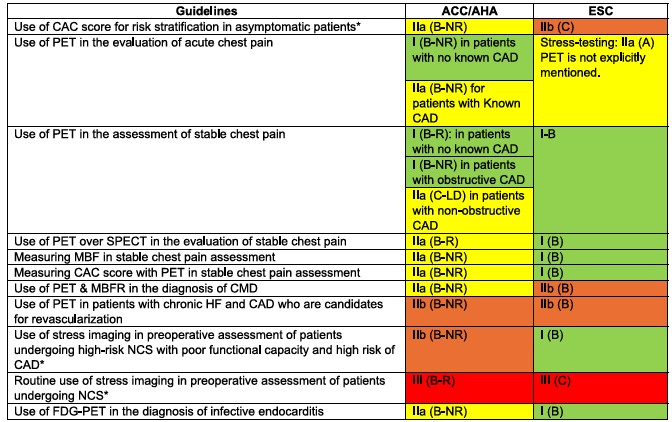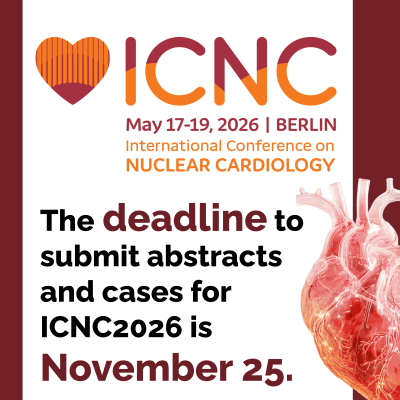Cardiac PET and PET/CT have earned new indications in recently published guidelines from the ACC/AHA, ESC, and the International Society for Heart and Lung Transplantation. “Several documents [are] now specifically recommending PET over other modalities when available — particularly in scenarios requiring quantitative myocardial blood flow assessment or improved diagnostic accuracy in challenging patient populations,” says Journal of Nuclear Cardiology (JNC) Editor-in-Chief Marcelo F. Di Carli, MD, MASNC.
To help you translate these recommendations into practice, JNC published a state-of-the-art review article documenting growing support for PET and PET/CT in the evaluation of ischemic heart disease, cardiac sarcoidosis, cardiac amyloidosis, endocarditis, vasculitis, and heart failure.
The article by Maria Alwan, MD, and colleagues, includes tables that provide at-a-glance summaries of ACC/AHA and ESC guideline recommendations for use of PET in evaluating stable chest pain; coronary microvascular disease/INOCA; heart failure; and non-coronary applications, including infective endocarditis and vasculitis.
Another table highlights the differences between the ACC/AHA and ESC guidelines. Currently, the authors say, the ESC provides more Class I recommendations than the ACC/AHA; however, “both sets of guidelines acknowledge the growing role of PET for perfusion, myocardial viability, and inflammation imaging.”
This article is a must-read for all cardiologists and cardiac imagers.
Article Type
JNC News, News & Announcements
Category
Journal of Nuclear Cardiology (JNC), Research
Related Posts
Dr. Juhani Knuuti to Deliver Keynote Lecture at ICNC2026, the International Conference on Nuclear Cardiology
Presenting a Vision for Precision Imaging in Cardiovascular Care Juhani Knuuti, MD,…
Tracer News! What If SPECT Could Bring Myocardial Blood Flow to Every Lab?
There’s a new perfusion radiotracer on the horizon, and it has the…
Earn a Spot in ICNC2026’s Young Investigator Awards Competition
The ICNC2026 Organizing Committee is now accepting original scientific abstracts and clinical…




